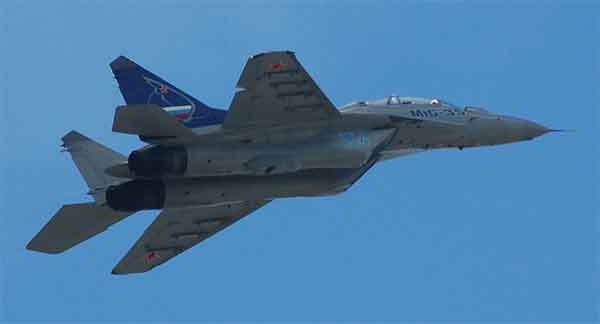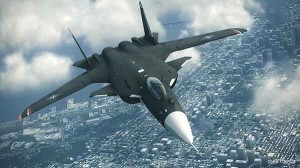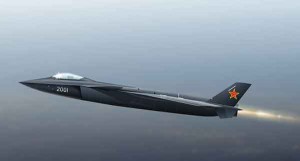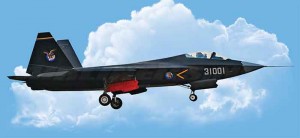Development of Stealth Aircraft
US aerospace major Lockheed Martin took the lead to launch a project at its Skunk Works facility to develop the F-117, the first true stealth aircraft to become operational anywhere in the world. The project was shrouded in utmost secrecy and although the aircraft undertook its maiden flight as early as in 1981, it was revealed to the world just before it took part in the Gulf War. This was followed by the development of the nuclear stealth bomber B-2 Spirit by Northrop Grumman as follow up to the 1970s vintage B-1 designed and developed by Rockwell International.
The major weakness in China’s stealth technology regime has been lack of capability to design and build an indigenous stealth engine…
There were some programmes though that met with failure. The McDonnell Douglas/General Dynamics A-12 Avenger II, a carrier-borne stealth aircraft programme for which contract was awarded in 1986, was abandoned in 1991 on account of apparently insurmountable technological problems and massive cost overruns. Stealth technology really matured with the development of the fifth-generation fighter aircraft, the F-22 Raptor as a replacement for the F-15 Eagle. This was a product of joint effort by Boeing and Lockheed Martin.
In response, the Russian aerospace industry came up with its own versions of fourth-generation plus semi-stealth aircraft, the Su-47 ‘Berkut’ and the MiG-35 Super Fulcrum/Raptor Killer, an advanced derivative of the MiG-29. Unlike the American stealth technology that was focused on shape of the airframe, these two Russian combat aircraft employed sophisticated Plasma Stealth Technology also known as Active Stealth Technology originally developed by the Soviet Union for its space programme. This technology involves building in the capability in the aircraft to generate a Plasma Field that covers the entire external surface. The Plasma Field absorbs the electromagnetic energy of the radar waves thus reducing the intensity of the reflected wave and minimising the radar cross-section of the target aircraft.
The next stealth aircraft which is yet to be fully operational in the US is the F-35 Joint Strike Fighter (JSF) Lightening II by Lockheed Martin as a replacement for the F-16. Being the first stealth aircraft capable of Vertical Take-Off and Landing, the single-engine F-35 is shaped to have a low radar cross-section, has an airframe made out of stealth oriented materials and incorporates infrared and visual signature reduction measures.
The equivalent Russian stealth platform is the fifth-generation Sukhoi T-50 Prospective Airborne Complex of Frontline Aviation or PAK-FA, currently under flight test phase. The aircraft has an uncanny resemblance to the F-35 in shape. Incidentally, the twin-seat version of the T-50 PAK FA for the Indian Air Force (IAF) designated as the Fifth Generation Fighter Aircraft (FGFA) is under development and is expected to enter service by the end of this decade. This will be the first stealth fighter the IAF will be privileged to own and operate. The second will possibly be the Advanced Medium Combat Aircraft without vertical stabilisers being designed by the Indian aerospace industry, if and when it does become a reality.
While the US and Russia carry on a neck-on-neck race in the development of stealth technology, China appears to be emerging on the scene as a dark horse with equally competitive products. Its first stealth platform described as “a masterpiece of home-grown innovation” is the Chengdu J-20 fifth-generation, twin-engine stealth fighter aircraft designed and developed for the People’s Liberation Army Air Force (PLAAF) by the Chengdu Aircraft Industry Group. Very similar to the American F-22 and the F-35 in airframe design, the J-20 undertook its maiden flight in January 2011.
China’s next stealth fighter aircraft that completed its successful maiden flight on October 31, 2012, is the Shenyang J-31 nicknamed Falcon Eagle. Smaller in size, lighter than the J-20 and currently under development, the J-31 Falcon Eagle is a twin-engine, mid-size fifth generation fighter jet which is also referred to as the F-60 or J-21. Once again, this new stealth fighter resembles the F-22 Raptor and the F-35 JSF leading to the suspicion that the design could have been acquired from the US in a clandestine manner.
The advantages that stealth technology offers are not without attendant limitations…
China also plans to develop, in due course, a maritime version of the aircraft which, when deployed on the Liaoning as well as her indigenous carriers to be built in the future, will give her the capability to project air power all over the world with the help of the next generation stealth war planes. The US with its carrier version of the F-35 already under trials, is clearly ahead at this point in time but this situation may change in the future.
After the Chengdu J-20 and the Shenyang J-31, the Chinese are reported to be developing the third stealth aircraft, the J-18. Meant for the PLAAF, this is a 4.5 generation fighter aircraft designed once again by the Shenyang Aircraft Corporation and is nicknamed ‘Red Eagle’. As per reports in the Japanese media, the J-18, which will have the capability of Vertical Take-off and Landing, will come with super-stealth characteristics. The prototype has already completed its maiden test flight at a secret base in Inner Mongolia. China is also reported to be developing her first weaponised stealth Unmanned Aerial Vehicle.
In view of China’s demonstrated capability to indigenously design and develop her own 4.5 generation stealth fighter aircraft, Russia has agreed to sell her Su-35 fighters equipped with advanced 117S engines. China’s meteoric rise in this field has also inspired the US Department of Defense to increase the number of F-22 and F-35 fighter jets based in Asia to counter the threat from China’s new range of stealth platforms. However, the major weakness in China’s stealth technology regime has been lack of capability to design and build an indigenous stealth engine to power its stealth fighter jets. Currently, China is dependent on Russia for the supply of stealth power plants.
The US is finding it difficult to sustain its fleet of the B-2 Bomber and the F-22 Raptor…
The Flip Side of Stealth Technology
The advantages that stealth technology offers are not without attendant limitations. On account of the unique design features of the airframe of stealth aircraft that do not exactly enhance aerodynamic excellence, as compared to a normal aircraft, the stealth aircraft invariably suffer significant performance penalties. When compared with normal conventional combat aircraft of equal weight and size, stealth aircraft have relatively lower top speed, lower payload capacity due to limitations of internal space for the carriage of weapons, are generally not as easily manoeuvrable and are prohibitively expensive to procure and maintain. Even the US is finding it difficult to sustain its fleet of the B-2 Bomber and the F-22 Raptor. These aircraft are certainly less affordable for developing countries.
The Future
In the never ending rivalry between offence and defence, there will be a continuing race in development between stealth technology and detection devices of air defence systems. In future, stealth technology will be extended to transport aircraft, rotary wing and unmanned serial platforms. While stealth technology will undoubtedly play an increasingly critical role in air operations in the future, radar systems of the future will also have far greater capability to defeat stealth. The future holds even greater challenges for human ingenuity and the capability to innovate.









stealth has very unique interests in applications,, and USA is top dog in it,, EU still have to master its tech,
When it comes to Bharat,, pathetic govt employees cant even understand what is stealth,,lol,, they come sit in A/c rooms,, gets their salary per month,, after their death their wives gets pension funds,, how much tax payers money is wasting on each govt employee ? they are not even worth to be employed.